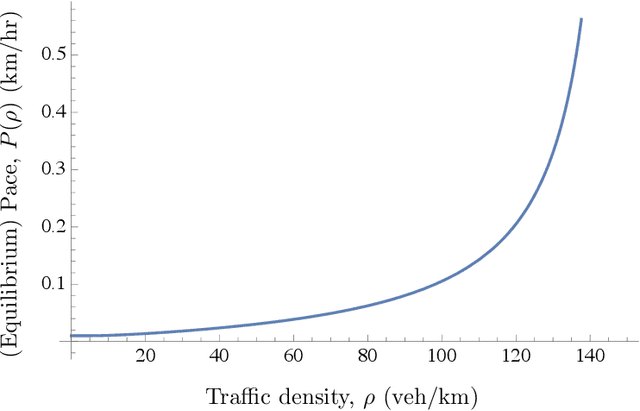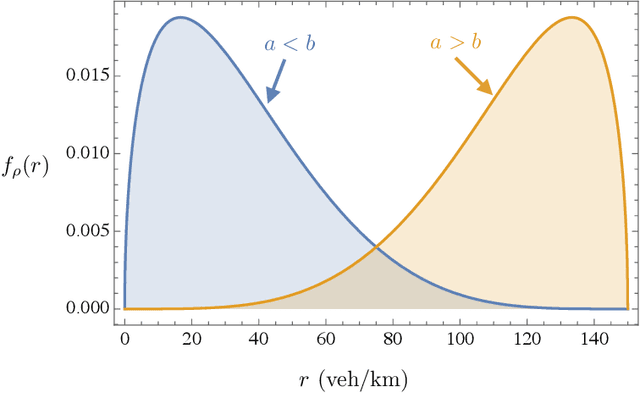Deepthi Mary Dilip
Sparse Travel Time Estimation from Streaming Data
Jun 27, 2018



Abstract:We address two shortcomings in online travel time estimation methods for congested urban traffic. The first shortcoming is related to the determination of the number of mixture modes, which can change dynamically, within day and from day to day. The second shortcoming is the wide-spread use of Gaussian probability densities as mixture components. Gaussian densities fail to capture the positive skew in travel time distributions and, consequently, large numbers of mixture components are needed for reasonable fitting accuracy when applied as mixture components. They also assign positive probabilities to negative travel times. To address these issues, this paper develops a mixture distribution with asymmetric components supported on the positive numbers. We use sparse estimation techniques to ensure parsimonious models. Specifically, we derive a novel generalization of Gamma mixture densities using Mittag-Leffler functions, which provides enhanced fitting flexibility and improved parsimony. In order to accommodate within-day variability and allow for online implementation of the proposed methodology (i.e., fast computations on streaming travel time data), we introduce a recursive algorithm which efficiently updates the fitted distribution whenever new data become available. Experimental results using real-world travel time data illustrate the efficacy of the proposed methods.
Learning Traffic Flow Dynamics using Random Fields
Jun 22, 2018



Abstract:This paper presents a mesoscopic stochastic model for the reconstruction of vehicle trajectories from data made available by subsets of (probe) vehicles. Long-range vehicle interactions are applied in a totally asymmetric simple exclusion process to capture information made available to connected and autonomous vehicles. The dynamics are represented by a factor graph, which enables learning of traffic dynamics from historical data using Bayesian belief propagation. Adequate probe penetration levels for faithful reconstruction on single-lane roads is investigated. The estimation technique is tested using a vehicle trajectory dataset generated using an independent microscopic traffic simulator. Although the parameters of the traffic state estimation model are learned from (simulated) historical data, the proposed algorithm is found to be robust to unpredictable conditions. Moreover, by exposing the algorithm to varying traffic conditions with increasingly larger datasets, the probe penetration rates required to capture the traffic dynamics effectively can be substantially reduced. The results also highlight the need to take into account randomness in the spatio-temporal coverage associated with probe data for reliable state estimation algorithms.
 Add to Chrome
Add to Chrome Add to Firefox
Add to Firefox Add to Edge
Add to Edge